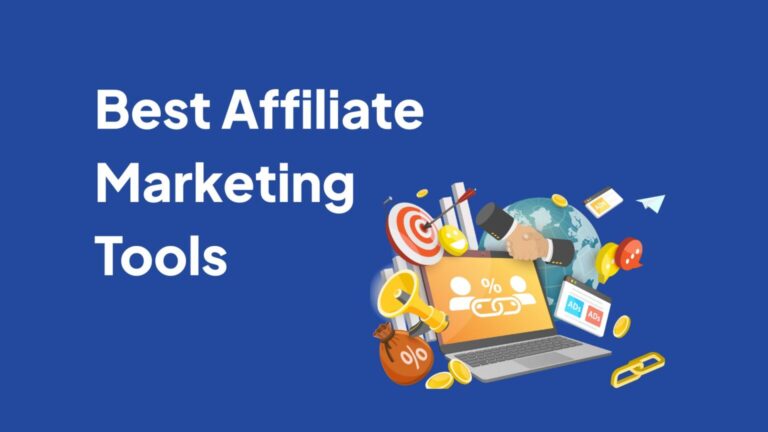How to Use SEO to Drive Affiliate Marketing Success: A Step-by-Step Guide 2025
Affiliate marketing has become a powerful way for individuals and businesses to earn passive income by promoting products and services. However, to make affiliate marketing truly successful, you need to attract organic traffic. That’s where Search Engine Optimization (SEO) comes into play. With the right SEO strategy, you can increase your website’s visibility on search engines, draw more potential customers, and ultimately drive affiliate sales. This guide will walk you through the steps on how to use SEO to fuel your affiliate marketing success.
1. Understanding SEO and Affiliate Marketing
Before diving into the nitty-gritty details, it’s essential to understand how SEO and affiliate marketing work together. SEO refers to the process of optimizing your website or content so that it ranks higher on search engines like Google. This can be achieved by optimizing your content, improving your site’s structure, and building backlinks. On the other hand, affiliate marketing involves promoting products or services for a commission when someone makes a purchase through your referral link.
For affiliate marketing success, SEO is crucial because it helps increase your content’s visibility. The more people find your affiliate links through search engines, the higher the chances you’ll make a sale. SEO ensures your site is seen by the right audience, which is fundamental for affiliate marketers looking to maximize their earnings.
2. Keyword Research: The Foundation of SEO
Keyword research is the first and most crucial step in optimizing your content for search engines. Identifying the right keywords to target will determine the success of your SEO strategy. Begin by using keyword research tools like Google Keyword Planner, SEMrush, or Ahrefs to find relevant search terms related to the affiliate products you are promoting.
Focus on finding a balance between search volume (how many people are searching for that keyword) and competition (how difficult it is to rank for that keyword). Long-tail keywords, which are more specific and less competitive, can be valuable because they tend to convert better, even if they have lower search volume. Once you’ve identified the best keywords, incorporate them naturally into your content, including titles, headers, and body text.
3. On-Page SEO: Optimizing Your Content
On-page SEO refers to the practices you apply directly within your website to improve its ranking. This includes using keywords effectively, optimizing meta tags, improving the user experience, and making sure your content is high-quality and valuable.
Start by ensuring that your primary keyword appears in important places, like the title, first paragraph, and subheadings. However, avoid keyword stuffing, as this can hurt your rankings. Also, optimize your meta title and description, as these are shown in search engine results and play a role in click-through rates. The content itself should be well-researched, informative, and helpful to readers, making them more likely to engage with your affiliate links.
4. Content Quality: Creating Valuable and Engaging Posts
Content is king when it comes to SEO and affiliate marketing. Search engines prioritize high-quality content that satisfies user intent. To succeed in affiliate marketing, you need to create content that not only informs but also engages your audience. Whether it’s blog posts, reviews, or how-to guides, your content should be comprehensive, addressing the needs and concerns of your target audience.
Additionally, your content should answer specific questions people may have about the products or services you’re promoting. High-quality content builds trust with your audience, encouraging them to click on your affiliate links. Make sure to update your content regularly to keep it fresh and relevant, as search engines prefer sites that are consistently updated with valuable information.
5. Technical SEO: Improving Site Performance
Technical SEO is all about ensuring your website functions properly and is optimized for search engines. This includes factors such as website speed, mobile-friendliness, and site structure. A fast, mobile-friendly website will not only rank better on search engines but also provide a better experience for your visitors, which can increase conversions.
Start by improving your page load speed, as slow-loading sites can frustrate visitors and negatively impact your SEO rankings. Tools like Google PageSpeed Insights can help identify areas for improvement. Additionally, ensure your website is mobile-responsive since a growing number of users access websites from mobile devices. By fixing technical issues, you’ll provide a smoother experience for your visitors and improve your SEO performance.
6. Building Backlinks: Getting Credible Referrals
Backlinks are an essential part of SEO because they signal to search engines that other reputable websites consider your content valuable. The more high-quality backlinks your site has, the more likely it is to rank higher in search results. To build backlinks, focus on creating shareable content and outreach strategies like guest posting or influencer collaborations.
Guest posting on reputable blogs or websites in your niche can help you get backlinks and drive traffic to your site. Additionally, you can build backlinks by creating content that naturally earns links, such as original research, case studies, or resource lists. Having credible backlinks helps boost your authority and trustworthiness, which directly impacts your affiliate marketing success.
7. User Experience: Ensuring Easy Navigation
The user experience (UX) of your website is another important SEO factor that should not be overlooked. A well-designed website that is easy to navigate increases the likelihood that users will stay on your site longer, browse more pages, and ultimately make a purchase through your affiliate links.
Ensure that your site has a clear structure with intuitive navigation. A clean design, easily accessible content, and fast-loading pages can all enhance the user experience. Additionally, ensure that your affiliate links are not intrusive and are placed where users can easily find them without interrupting their browsing experience. An optimized UX will not only improve your SEO but also boost your conversion rates.
8. Creating Effective Affiliate Links
When it comes to affiliate marketing, the way you incorporate affiliate links into your content matters. While it’s essential to include affiliate links in your content, it’s equally important to do so in a way that feels natural and doesn’t disrupt the flow of your content. Avoid overloading your posts with affiliate links, as this can make the content seem sales-driven and less genuine.
One effective strategy is to incorporate affiliate links within in-depth product reviews, comparison articles, or resource pages. Be sure to include a clear call-to-action that directs the reader to click on the affiliate link. Remember, the goal is to provide value to your audience while subtly guiding them toward making a purchase through your referral link.
9. Tracking and Analyzing SEO Performance
To understand how well your SEO efforts are paying off, it’s essential to track and analyze your performance regularly. Tools like Google Analytics, Google Search Console, and affiliate networks can help you monitor your traffic, rankings, and affiliate sales.
By analyzing key metrics such as organic traffic, bounce rates, and conversion rates, you can identify what’s working and what needs improvement. For example, if certain content or keywords are bringing in more traffic and conversions, you can double down on those strategies. Regular performance analysis allows you to make data-driven decisions that improve your SEO and affiliate marketing results.
10. Local SEO: Targeting a Specific Audience
If your affiliate marketing efforts target a specific geographic location, then local SEO can help you rank higher in local search results. This can be particularly useful if you’re promoting products or services that are location-specific, like local deals or services.
To improve your local SEO, focus on using location-based keywords, setting up a Google My Business account, and obtaining local backlinks. Additionally, create content that addresses the needs and interests of your local audience. By optimizing for local search, you can attract more relevant visitors who are more likely to convert through your affiliate links.
11. Leveraging Social Media for SEO and Affiliate Marketing
While social media doesn’t directly impact your SEO rankings, it plays an important role in driving traffic to your website, which can indirectly improve your SEO. Sharing your content on social media platforms like Facebook, Twitter, and Instagram can help you reach a broader audience and increase engagement with your affiliate links.
Encourage your followers to engage with your content by asking questions, sharing their opinions, or clicking on your affiliate links. The more social signals you generate, the better it is for your SEO. Social media platforms also provide a great way to build relationships with your audience, which can lead to more affiliate sales.
12. Staying Up-to-Date with SEO Trends
SEO is constantly evolving, and staying up-to-date with the latest trends is vital to maintaining your affiliate marketing success. Search engines frequently update their algorithms, and what works today may not be as effective tomorrow. Keeping up with the latest SEO news and adjusting your strategy accordingly will ensure that your site continues to rank well.
Follow SEO blogs, attend webinars, and participate in SEO communities to stay informed about the latest changes and best practices. Regularly auditing your website’s SEO performance and implementing new strategies will help you stay competitive in the ever-changing world of SEO.
13. Mobile Optimization: The Growing Importance of Mobile Traffic
With more people accessing websites on their mobile devices than ever before, mobile optimization is a critical component of SEO. Google’s mobile-first indexing means that the mobile version of your website is used for ranking and indexing. Therefore, ensuring your website is fully optimized for mobile devices is essential for maintaining your search engine rankings.
Make sure your website is responsive, meaning it automatically adjusts to different screen sizes, whether on a smartphone, tablet, or desktop. Additionally, ensure that your mobile site loads quickly and that the content is easy to read and navigate on smaller screens. Optimizing your site for mobile devices can increase traffic, improve user experience, and boost affiliate marketing success.
14. The Role of Multimedia in SEO
Multimedia elements such as images, videos, and infographics can significantly enhance your SEO strategy. These elements not only make your content more engaging but also provide additional opportunities to optimize for SEO. For example, optimizing your image alt text with relevant keywords can help your images rank in search engine results.
Videos are another great way to drive traffic, as they can be embedded on your website or uploaded to platforms like YouTube. You can create product reviews, tutorials, or informational videos that include your affiliate links in the video description. Multimedia elements can improve user engagement, which positively impacts your SEO performance.
15. Ethical Affiliate Marketing: Building Trust with Your Audience
Finally, ethical affiliate marketing is crucial for long-term success. Being transparent with your audience about affiliate links and earning potential will help you build trust. Always disclose your affiliate relationships and only promote products or services you truly believe in.
By building trust and providing genuine recommendations, you will develop a loyal audience that is more likely to click on your affiliate links and make purchases. Trust is a key factor in driving conversions and ensuring sustainable affiliate marketing success.
Conclusion
Incorporating SEO into your affiliate marketing strategy is a game-changer for driving organic traffic and increasing sales. By following the steps outlined in this guide, you can improve your website’s visibility, attract more visitors, and optimize your affiliate content to increase conversions. SEO is an ongoing process, but with dedication and the right strategies






